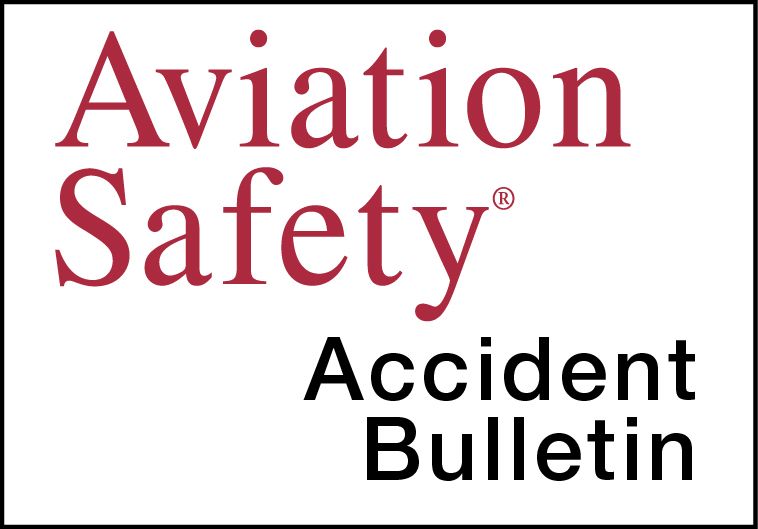AVweb’s General Aviation Accident Bulletin is taken from the pages of our sister publication, Aviation Safety magazine. All the reports listed here are preliminary and include only initial factual findings about crashes. You can learn more about the final probable cause on the NTSB’s website at www.ntsb.gov. Final reports appear about a year after the accident, although some take longer. Find out more about Aviation Safety at www.aviationsafetymagazine.com.
October 2, 2019, Windsor Locks, Conn.
Boeing B-17G Flying Fortress
At 0953 Eastern time, the airplane was destroyed during a precautionary landing and subsequent runway excursion. The commercial pilot, airline transport pilot and five passengers were fatally injured. The flight mechanic/loadmaster and four passengers were seriously injured, while one passenger and one person on the ground incurred minor injuries. The local Part 91 commercial sightseeing flight was conducted by the Collings Foundation, which owned and operated the airplane. Visual conditions prevailed.
Earlier, the airplane was fueled with 160 gallons of 100LL fuel, it was the first to be fueled that day. Shortly after takeoff from Runway 6, at 0950, with the airplane at about 500 feet AGL and on a right crosswind leg, its crew reported to ATC that they wanted to return, reporting a “rough mag” on the No. 4 engine. The tower controller reported calm winds and cleared the flight to land on Runway 6. As the pilot acknowledged the landing clearance, the airplane was at about 300 feet AGL and midfield on the right downwind.
Witnesses and surveillance video confirmed that the airplane struck approach lights then contacted the ground before reaching Runway 6. It then veered to the right off the runway and collided with vehicles and a deicing fluid tank about 1100 feet from the runway threshold.
Of the No. 3 engine’s propeller, one blade was impact damaged and near the feather position. The other two blades appeared in a position between low pitch and feather. All three of the No. 4 engine’s propeller blades appeared in the feather position. No anomalies were found with the fuel aboard the aircraft or the equipment supplying it. Maintenance records show engines 1, 2, and 3 had 0 hours since major overhaul at the airplane’s last annual inspection, in January. Engine No. 4 had 838.2 hours since major overhaul at that time. As of September 23, 2019, the airplane had been operated about 268 hours since the annual inspection.
October 3, 2019, Lansing, Mich.
Socata TBM 700
The airplane collided with terrain about 0858 Eastern time while conducting an ILS approach. The commercial pilot, pilot-rated passenger, and three passengers were fatally injured. The remaining passenger sustained serious injuries. The airplane was substantially damaged. Instrument conditions prevailed at the accident site; an IFR flight plan was in effect.
According to ADS-B data, at 0855:29, the airplane crossed over the outer marker at 2302 feet MSL and 168 knots calculated true airspeed. Between 0855:29 and 0857:45, the airplane decelerated to 64 knots while following the glideslope. At 0857:37, the airplane was 0.5 nm from the runway threshold at 1041 feet MSL, about 180 feet above the runway elevation. It then entered a shallow climb and a left turn away from the runway. When the left turn began, the airplane had decelerated to 72 knots. Between 0857:37 and 0857:45, it decelerated to 64 knots while it climbed slightly to 1059 feet. The final ADS-B datapoint, at 0857:45, positioned the airplane about 480 feet southwest of the initial impact point.
Based on available data, the airplane took off 232 lbs. over the maximum allowable takeoff weight and about 2.53 inches past the aft CG limit. It was about 126 lbs. over its maximum allowable landing weight and 2.95 inches past the aft CG limit at impact. According to the airplane’s POH, the stall speed at maximum takeoff weight with the landing gear and flaps extended for landing is 65 knots.
October 4, 2019, Asheboro, N.C.
Piper PA-28-180 Cherokee 180
At about 2033 Eastern time, the airplane was destroyed following a collision with terrain. The private pilot and a student pilot-rated passenger were fatally injured. Night visual conditions prevailed.
A witness later reported that, prior to departing on the accident flight, the accident pilot made a remark about being tired, and that his passenger needed to be “on his game.” Another witness, at the destination airport, later reported that dark, night conditions prevailed. He heard the pilot call in on the CTAF and announce his intentions to overfly the field from west to east and enter a left downwind for Runway 21. He observed the airplane overfly the field from west to east, then it appeared to turn left and disappear behind some trees.
Preliminary FAA radar data depict the airplane arriving overhead the destination airport at about 2029 from the west to the east before turning southbound (right). The airplane then made a right 360-degree turn about two miles south of the airport. Witnesses reported the airplane circled over the local high school football game, then entered a steep, nose-down descent with the engine running at high speed during the descent. A review of the pilot’s logbook revealed he had logged a total of 4.6 hours of night time, and none since 2008. His most recent flight review was completed on January 6, 2016. A pilot who flew the accident airplane earlier that day reported its vacuum pump was not operational and vacuum-driven flight instruments were not reliable. The accident pilot was aware of the problem but did not voice any concerns about flying at night.
This article originally appeared in the January 2020 issue of Aviation Safety magazine.
For more great content like this, subscribe to Aviation Safety!



































